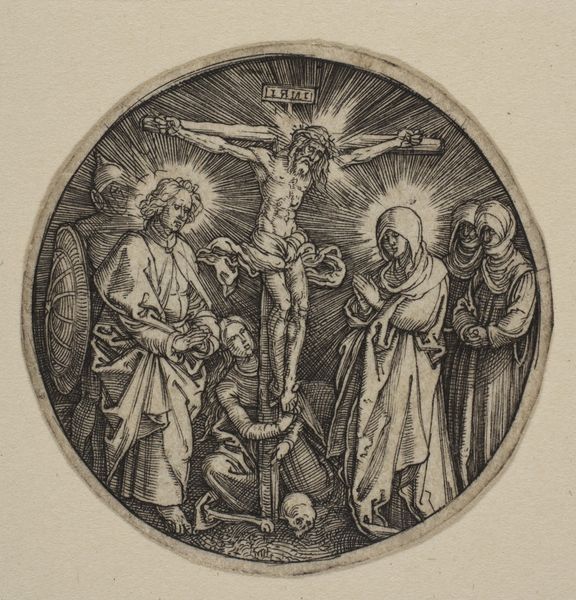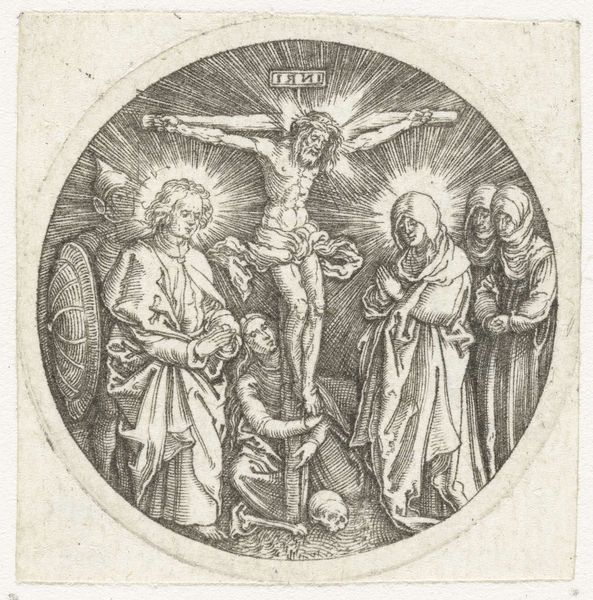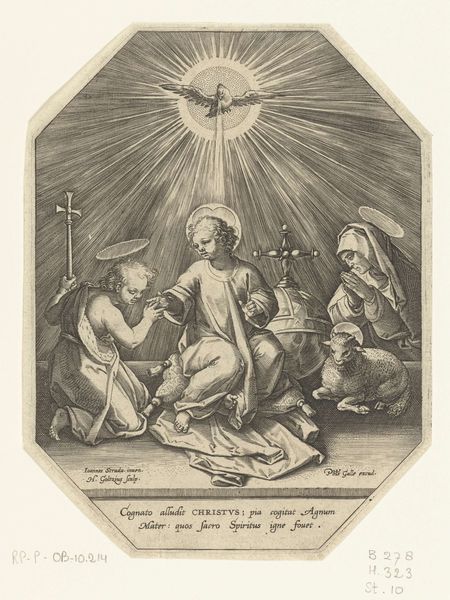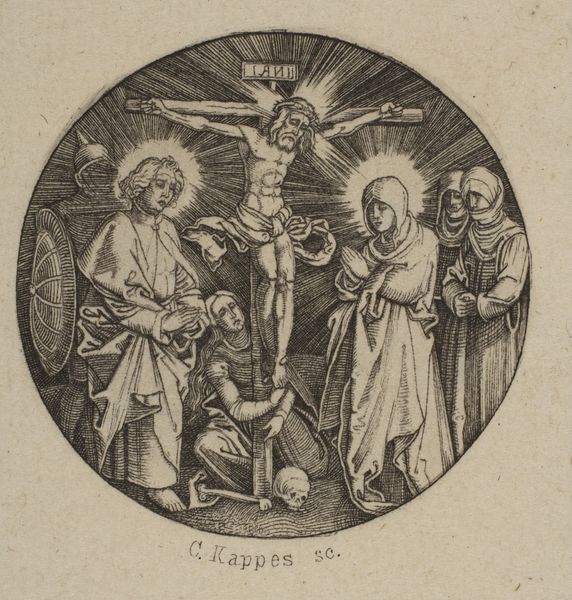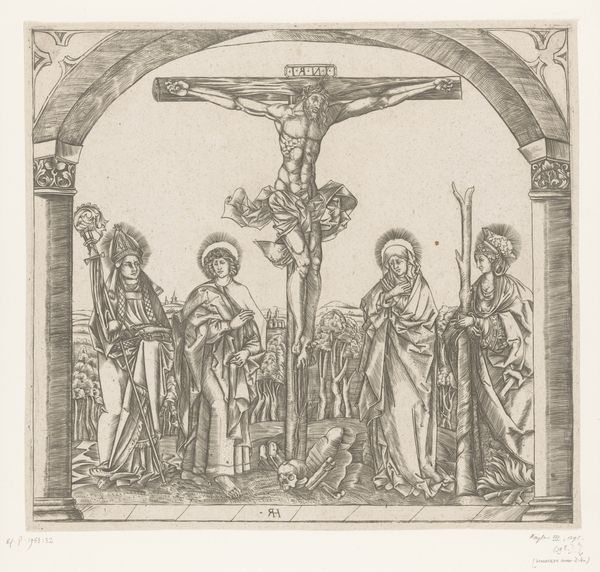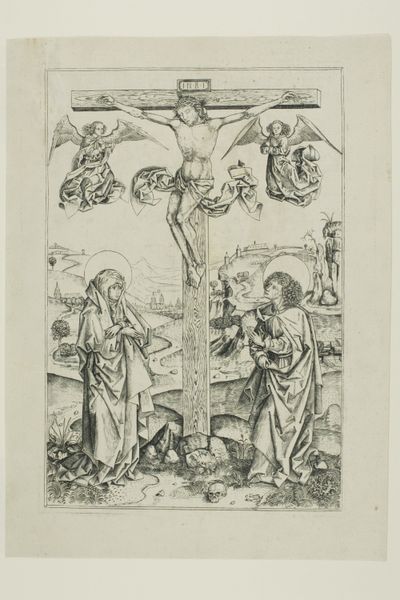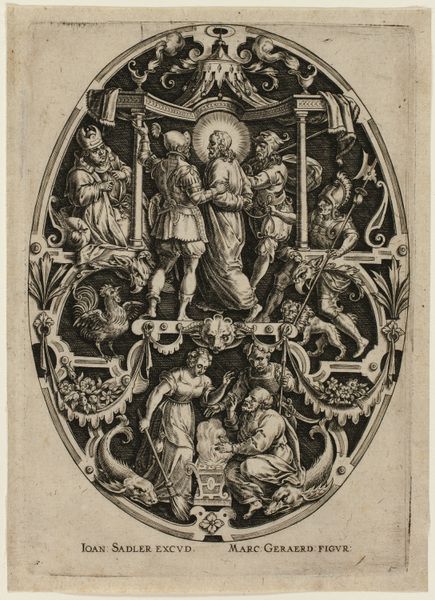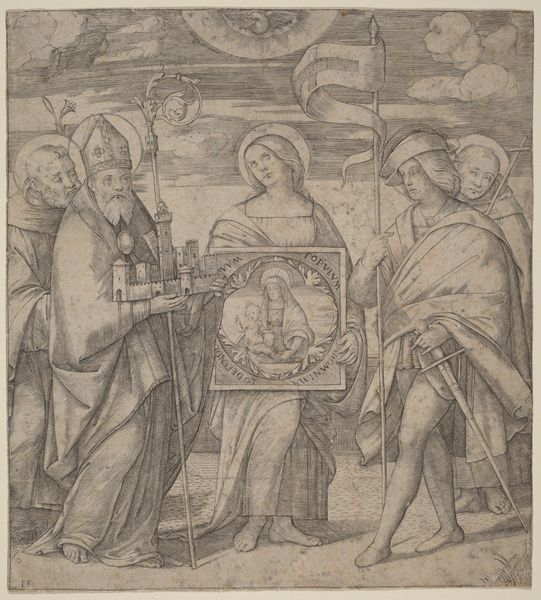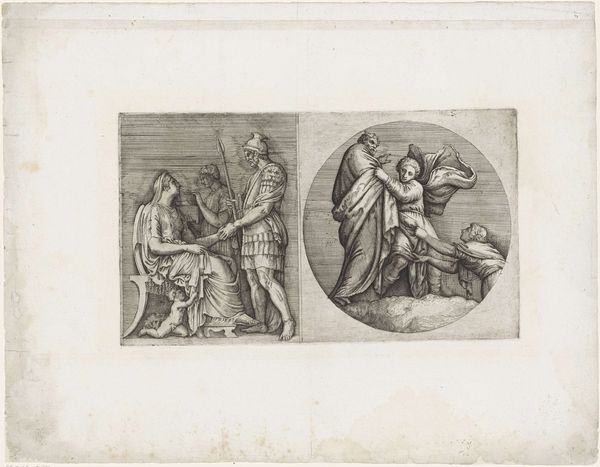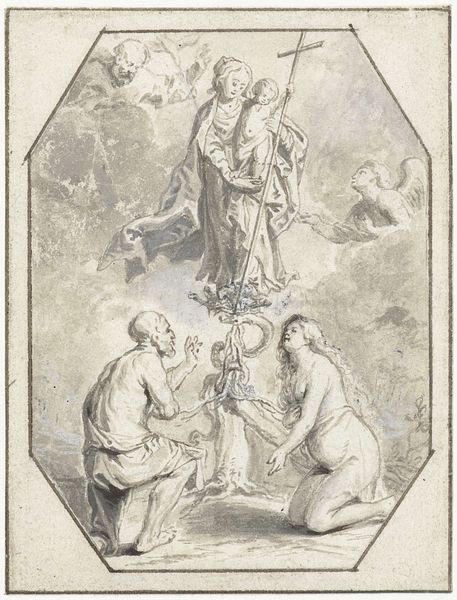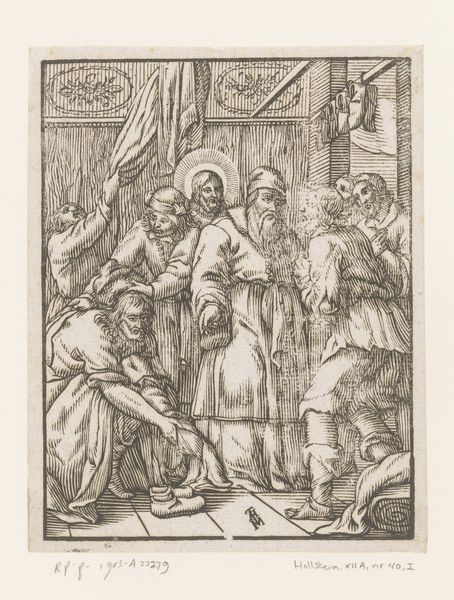
drawing, print, engraving
#
drawing
#
medieval
# print
#
sketch book
#
landscape
#
figuration
#
line
#
crucifixion
#
history-painting
#
italian-renaissance
#
engraving
#
christ
Dimensions: Sheet: 1 7/16 × 1 9/16 in. (3.7 × 3.9 cm) Diameter: 1 3/8 in. (3.5 cm)
Copyright: Public Domain
Curator: Today we are observing "The Crucifixion (Round)," an engraving dating from around 1485 to 1528. The anonymous artist has crafted this small print, which is now housed at the Metropolitan Museum of Art. Editor: My immediate reaction is its intensity. The tightly packed figures and the stark lines evoke a powerful sense of grief and solemnity within the circular frame. It almost feels like a world unto itself. Curator: Absolutely. Engraving as a printmaking process in this era involved significant labor. The artist used a tool to cut lines into a metal plate, and the depth and density of these lines determined the contrast in the final print. Each print represents a considerable amount of skilled work. It's not just an image, but the outcome of intense physical and intellectual effort. Editor: And the symbolism is striking. We see the skeletal remains at the base of the cross, a clear memento mori reminding us of death’s presence even within this sacred event. The halo-like bursts of light around the figures’ heads also contribute to the emotional weight, almost vibrating with spiritual significance. Curator: Precisely. And thinking about the distribution of these prints, these engravings facilitated the spread of religious imagery to a broader audience. The material process is key to understanding how these iconic scenes became so deeply embedded in the cultural fabric. Editor: Looking closely, it’s interesting to see the variation in expressions, too – the stoic acceptance, the distraught sorrow. They present a range of emotional responses, all circling around a central point of suffering and sacrifice. Curator: From my perspective, it underscores the craftsmanship of the age. The ability to produce detailed imagery with limited technology highlights the deep material knowledge and dedication of the engraver. The economics and accessibility of printmaking played a huge role in how art, devotion, and propaganda intertwined during this era. Editor: It certainly makes you consider how an image like this carries such a heavy emotional and cultural burden, continuing to speak to us centuries later. It's fascinating how symbols resonate and endure. Curator: Indeed, tracing the production informs our sense of this artwork's history and enduring meaning. Editor: Ultimately, this small, precisely made object really leaves a big impact.
Comments
No comments
Be the first to comment and join the conversation on the ultimate creative platform.

